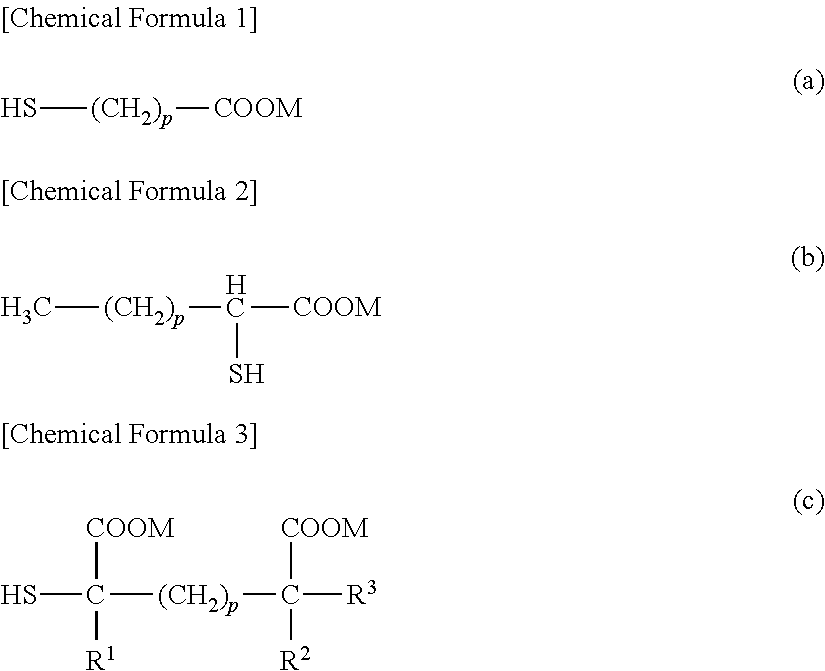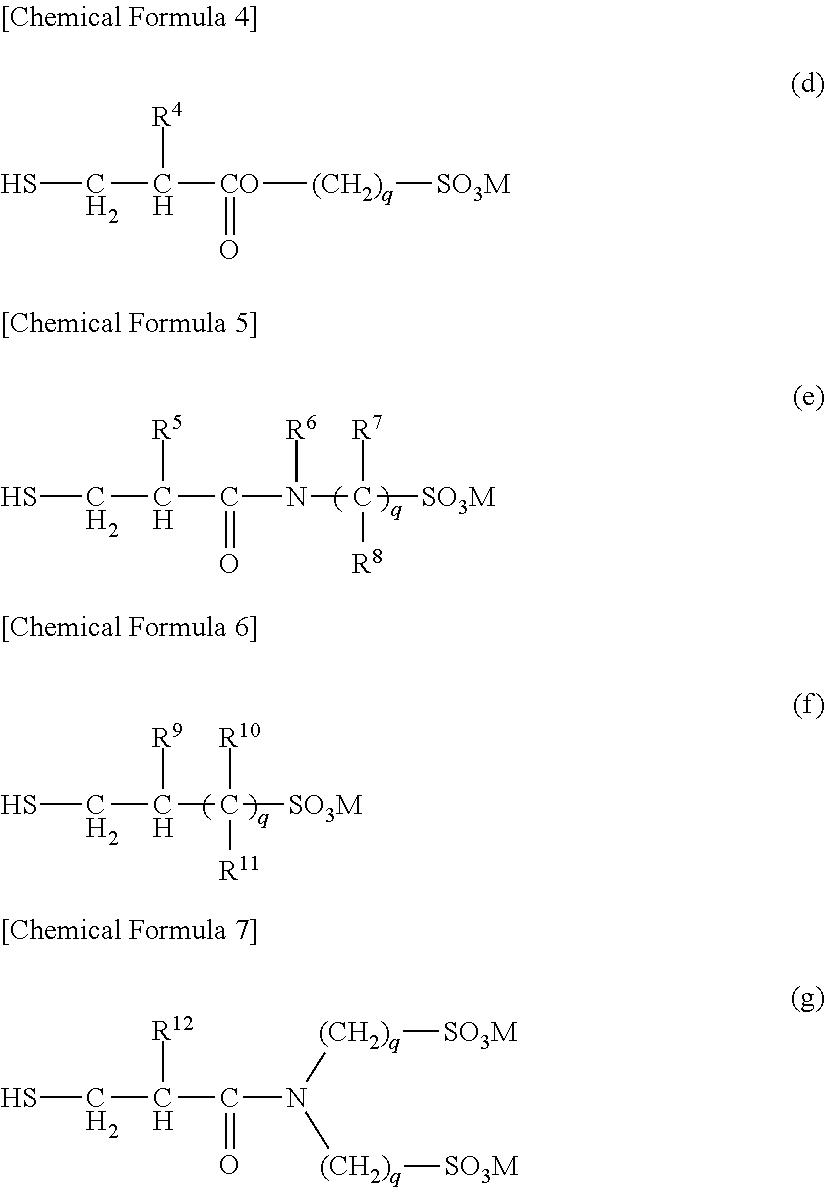Dispersion stabilizer for suspension polymerization and vinyl resin production method
a technology of dispersion stabilizer and vinyl resin, which is applied in the field of dispersion stabilizer for suspension polymerization and vinyl resin production method, can solve the problems of unsatisfactory handling and unsatisfactory requirements of dispersion stabilizer described in patent reference nos. 1 to 3, and achieves high processing efficiency, high polymerization stability, and high processing efficiency.
- Summary
- Abstract
- Description
- Claims
- Application Information
AI Technical Summary
Benefits of technology
Problems solved by technology
Method used
Image
Examples
production example 1
Production of PVA(A1)
[0078]In a polymerization tank were charged 1387 parts of vinyl acetate (hereinafter, abbreviated as “VAc”), 315 parts of methanol and 8.61 parts of 3-mercaptopropionic acid (hereinafter, abbreviated as “3-MPA”) as a chain transfer agent, and after nitrogen substitution, the mixture was heated to its boiling point. Then, to the mixture was added 2,2′-azobis(4-methoxy-2,4-dimethylvaleronitrile) as a polymerization initiator in an amount of 0.02% based on VAc. Addition of 3-MPA and the initiator was continued such that concentrations of 3-MPA and the initiator in the polymerization tank is kept at 0.62% and 0.02%, respectively, based on a concentration of VAc. Polymerization was conducted at a rotation frequency of 70 rpm using a Maxblend blade as a stirring blade. At the time that a rate of polymerization reached 62%, periodic addition of VAc and methanol was initiated such that a ratio of unreacted VAc to methanol at that point was kept, while addition of 3-MPA ...
production examples 2 to 14
Production of PVA(A2 to 14)
[0079]PVAs (A2 to 14) shown in Table 1 were produced as described in Production Example 1, changing polymerization conditions including the amounts of vinyl acetate and methanol; the type, the amount and an in-system concentration based on VAc of a chain transfer agent used in polymerization; an in-system concentration of a polymerization initiator based on VAc; a rate of polymerization; the type of a stirring blade; and a rotation frequency in stirring. Table 1 shows the production conditions and the physical properties of PVA(A)s produced, and Tables 2 and 3 show chain transfer agents and stirring blades used, respectively.
production example 15
Production of PVA(A15)
[0080]In a polymerization tank were charged 391 parts of VAc and 1311 parts of methanol, and after nitrogen substitution, the mixture was heated to its boiling point. Then, to the mixture was added azobisisobutyronitrile as a polymerization initiator in an amount of 0.3% based on VAc. Polymerization was conducted without adding a chain transfer agent at a rotation frequency of 100 rpm, using an anchor blade as a stirring blade. At the point that a rate of polymerization reached 62%, the system was cooled to terminate the polymerization. While adding methanol, residual VAc together with methanol was expelled under reduced pressure, to give a solution of PVAc in methanol (concentration: 60%). Then, PVAc was conventionally saponified using sodium hydroxide, neutralized with water and dried, to PVA(A15) with no terminal anionic groups with a viscosity average polymerization degree of 250, a saponification degree of 40 mol % and a proportion of low-molecular-weight ...
PUM
| Property | Measurement | Unit |
|---|---|---|
| saponification degree | aaaaa | aaaaa |
| viscosity average polymerization degree | aaaaa | aaaaa |
| mass ratio | aaaaa | aaaaa |
Abstract
Description
Claims
Application Information
 Login to view more
Login to view more - R&D Engineer
- R&D Manager
- IP Professional
- Industry Leading Data Capabilities
- Powerful AI technology
- Patent DNA Extraction
Browse by: Latest US Patents, China's latest patents, Technical Efficacy Thesaurus, Application Domain, Technology Topic.
© 2024 PatSnap. All rights reserved.Legal|Privacy policy|Modern Slavery Act Transparency Statement|Sitemap


